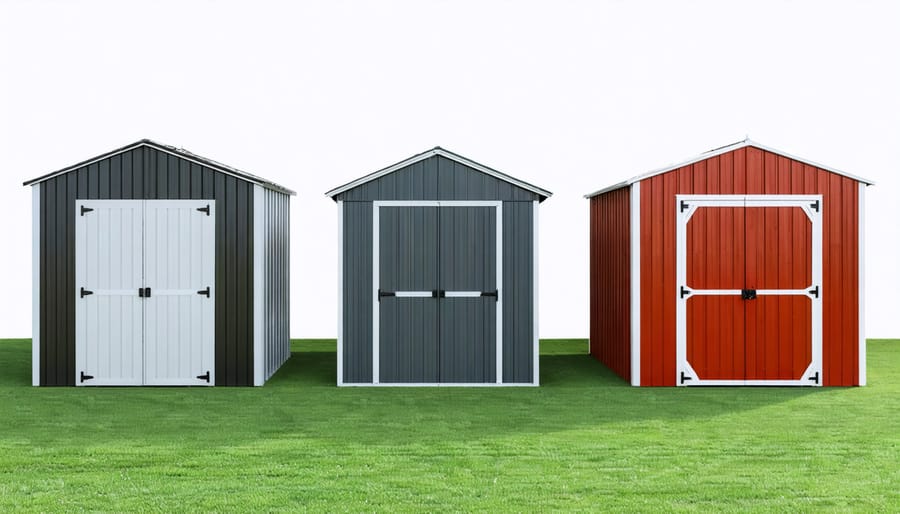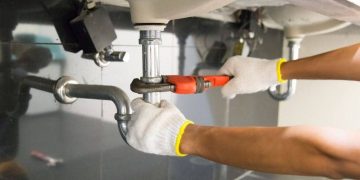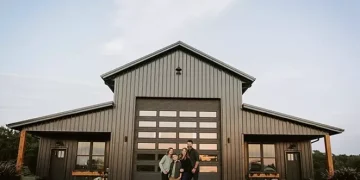Weather Warriors: How Plastic and Metal Sheds Stand Up to the Elements

When selecting a shed capable of standing up to harsh weather conditions, the choice often boils down to plastic or metal options. Both materials offer unique advantages that cater to different environmental challenges. Plastic sheds are renowned for their resistance to rot and termites, which is particularly beneficial in wet or humid climates. Conversely, metal sheds excel in strength, effectively handling wind and snow loads, making them great for storm-prone areas. Each type of shed has distinct features that influence its performance under various weather conditions. Understanding the characteristics of plastic vs metal sheds is crucial for making an informed decision that meets your specific climate and storage needs.
Plastic Sheds: Durability and Maintenance
Plastic sheds are favored for their impressive durability and minimal upkeep. Unlike wood, they are resistant to rot and termite damage, making them ideal for damp climates. Additionally, plastic sheds resist rust and fading, preserving their look over time. To keep your plastic shed in good condition, clean it regularly with mild soap and water to remove dirt and discourage mold growth. Inspect the shed for cracks or breaks, especially after extreme weather, and repair any damage promptly to maintain its structural integrity. This straightforward maintenance ensures that your shed remains in top shape.
Metal Sheds: Strength and Longevity
Metal sheds are renowned for their strength and ability to withstand severe weather conditions. Constructed from materials like galvanized steel or aluminum, they resist wind and snow loads effectively, making them a reliable choice for regions with harsh weather. To ensure your metal shed remains durable, regular maintenance is essential. This includes checking for rust spots and treating them with a rust inhibitor or paint. Additionally, inspect the roof for leaks and ensure all screws and bolts remain tight to prevent structural weaknesses. Regular upkeep helps preserve the integrity of your metal shed, ensuring it continues to protect your belongings from the elements.
Comparing Costs and Installation
Plastic sheds generally offer a more budget-friendly option compared to metal sheds, though prices can vary based on size and added features. Their lighter weight simplifies the installation process, and most plastic sheds come with easy-to-follow, ready-to-assemble kits.
On the other hand, metal sheds can be more expensive, and their assembly often requires more time and effort due to their heavier weight and intricate construction. Depending on the size and complexity, you might need professional help to ensure a secure installation.
Ultimately, the installation process for each type has its own set of challenges and advantages.
Environmental Impact
When considering the environmental impact of sheds, it’s important to look at both the materials and their lifecycle. Plastic sheds are typically made from recyclable materials, which can help minimize waste. However, the production of plastic often relies on fossil fuels, a point of concern for eco-conscious buyers.
In contrast, metal sheds are usually made from metals like steel or aluminum, which can be recycled indefinitely. This makes them a sustainable choice, despite the energy-intensive manufacturing process. The long lifespan of metal sheds further offsets their initial environmental cost, as they require less frequent replacement.
Another consideration is the maintenance aspect. Plastic sheds generally need fewer chemical treatments, which can be beneficial for the environment. Metal sheds, while sturdy, may require rust inhibitors or paint, which can have their environmental impacts.
Ultimately, both options offer eco-friendly features but also have their drawbacks. Plastic sheds reduce waste through recyclability, yet depend on fossil fuels for production. Metal sheds boast infinite recyclability and long-term durability, balancing their higher production energy requirements. By weighing these factors, you can make an environmentally responsible choice tailored to your specific needs.
Choosing the Right Shed for Your Needs
Selecting the appropriate shed involves evaluating various factors to ensure it meets your storage needs and withstands local weather conditions. Begin by assessing the climate in your area. For humid or wet environments, a plastic shed’s resistance to rot and rust is advantageous. In regions experiencing high winds or heavy snow, the robust nature of metal sheds provides the required durability.
Consider the size of the shed about the space you have available and the items you need to store. Smaller yards might benefit from compact, lightweight plastic sheds, while larger properties can accommodate bigger, sturdier metal sheds. Budget is another key consideration. Plastic sheds generally offer a more cost-effective solution, and their lighter weight simplifies installation. Conversely, while metal sheds can be more expensive and complex to assemble, their durability may justify the higher initial investment.
Think about the level of maintenance you’re willing to commit to. Plastic sheds require minimal upkeep, while metal sheds need regular checks for rust and structural integrity. Each type of shed presents distinct advantages and challenges. By carefully considering factors like climate, size, budget, and maintenance, you can choose the shed that best aligns with your specific requirements.
Selecting the best shed for your needs involves a careful evaluation of various factors to ensure it meets your expectations in terms of weather resistance, cost, and maintenance. By taking all these aspects into account, you can confidently choose a shed that aligns with your specific needs and provides reliable protection for your belongings.














